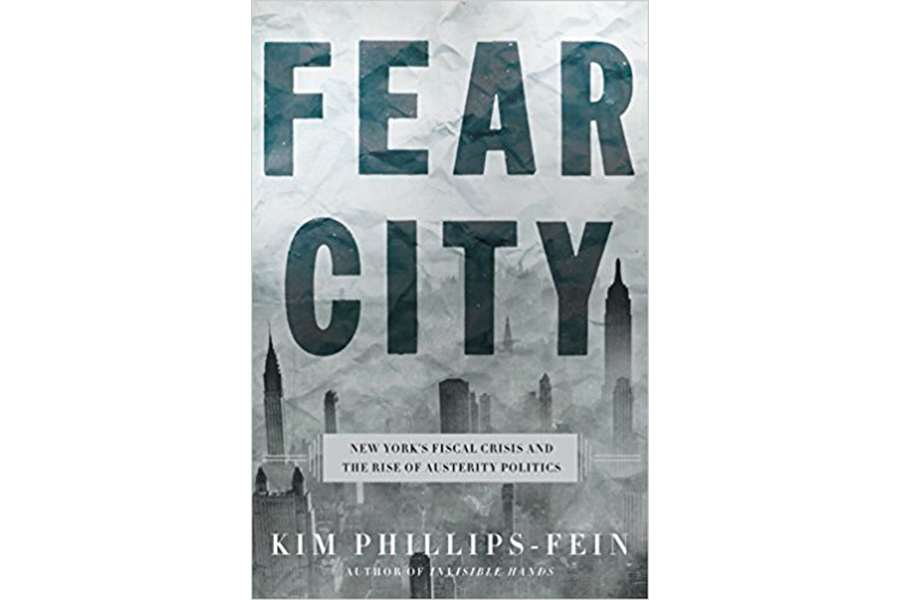When New York City stood on the brink
Loading...
There are plenty of famous newspaper headlines from New York City's flamboyant tabloids (looking at you, "Headless Body in Topless Bar.") But none has quite the zing of the words blaring from the cover of the New York Daily News on Oct. 29, 1975 – "Ford to City: Drop Dead."
President Gerald Ford never used those exact words, and he ended up rescuing NYC from bankruptcy after all. But the headline stung, perhaps sealing Ford's defeat in New York state in the 1976 election.
And something did die – the belief that a major American city could improve the lives of its citizens by providing extraordinarily generous services in areas like education, transportation, and medical care.
Kim Phillips-Fein, a New York University history professor, tracks the city's influential skid in her fascinating and deeply reported new book Fear City: New York's Fiscal Crisis and the Rise of Austerity Politics.
In a Monitor interview, she explores the roots of the city's financial crisis, the conservative bid to kill a municipal welfare state, and a surprising beneficiary of this mammoth mess.
Q: What drew you to this story?
I became interested in the fiscal crisis when I was finishing my first book, "Invisible Hands: The Businessman's Crusade Against the New Deal," which was about the rise of conservatism in the postwar years.
I was struck by how charged the crisis was for conservative activists. It was clear that they believed what happened in New York would affect the direction of the country as a whole, that it was a story about the fall of liberalism. This was fascinating to me: Could you tell the story of the crisis of the liberal state by looking at one city?
Q: What sorts of benefits did the city provide to residents that are unimaginable today?
Probably the most dramatic is free tuition at the city university. Bernie Sanders was criticized as unrealistic for arguing that college should be free, but that was reality for over a century in New York City.
There were also many public hospitals and clinics, school programs that featured a wide range of arts options, including free admission to museums such as the Met and the Museum of Natural History, and public transit that cost what would be less than a dollar today.
The system was becoming strained, but the government surely tried to do much more in New York City than elsewhere in the country.
Q: The city's careless over-borrowing – a major cause of the crisis – reminds me a lot of the 2008 financial meltdown. Both had roots in accounting chicanery, weird financial strategies, and silent watchdogs. Is that a good comparison?
Yes. Although there are many differences, in both cases there was a strong desire to conceal how much was wrong until it became impossible to do so any longer.
Q: What surprised you the most as you researched the book?
How willing the Ford administration was to let the city approach bankruptcy. I also was surprised by how much resistance there was to the cuts in the city, how many protests there were against the loss of public services.
Q: How much of the Ford administration's intransigence was due to pragmatism compared to trying to kill the "welfare state"?
While these motivations are hard to pull apart, the Ford administration definitely approached the crisis in a very ideological way and sought to use it to teach other cities and the nation as a whole a lesson about the dangers of the welfare state.
Q: Do you think the city could have preserved the services that it provided in another workable way?
Had the federal government offered the city aid on different terms, it might have been possible to preserve the services that it provided. Had it been possible to re-negotiate some of the major expenses the city bore – for example, the sizable amount of the cost of Medicaid it had to carry, much higher than most localities in the country – this would have left the city in a much better position.
Or had it been possible to find some way to share revenues between the city and its suburbs, this would, of course, have helped New York.
All these solutions were politically out of the question at the time. But it is important to remember that this is a question of politics, not a natural law.
Q: What legacy does the crisis leave us today?
The crisis helped to delegitimize the idea of the welfare state, and we are still living with that ambivalence toward government action today. More locally, Donald Trump got his start in Manhattan real estate as a result of the fiscal crisis.
His first major Manhattan deal was the redevelopment of the old Commodore Hotel as the Grand Hyatt. He was able to get tax breaks worth hundreds of millions of dollars, because the city was so eager to show that its attitude toward business had changed.
Randy Dotinga, a Monitor contributor, is immediate past president of the American Society of Journalists and Authors.







